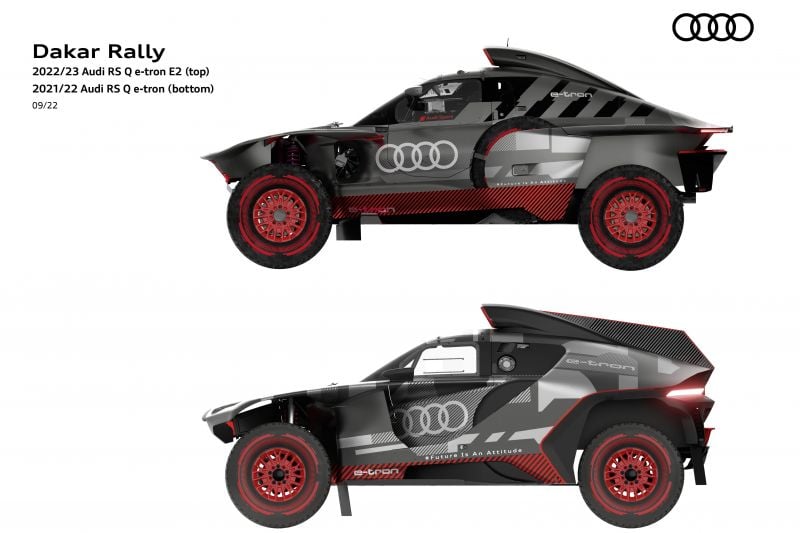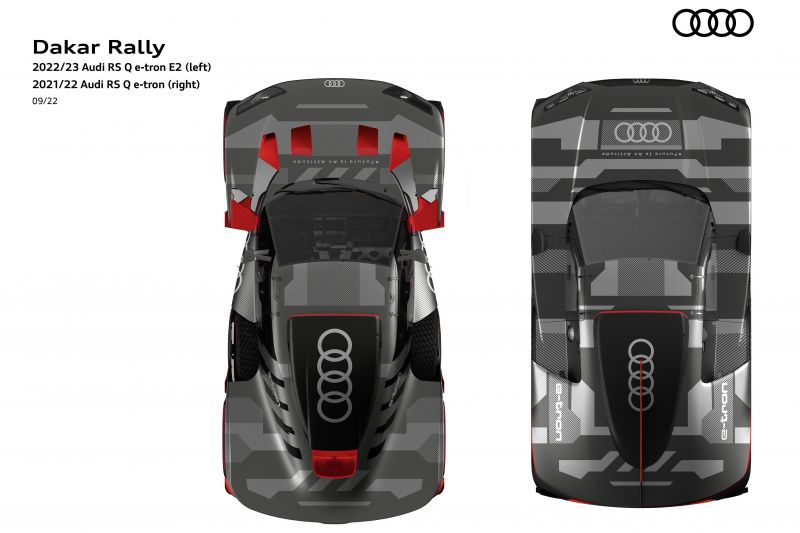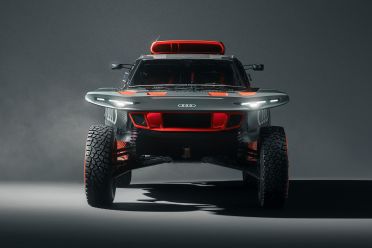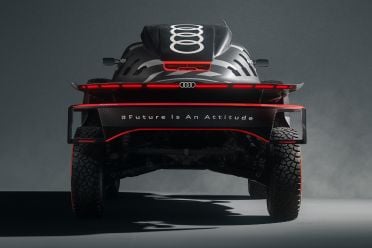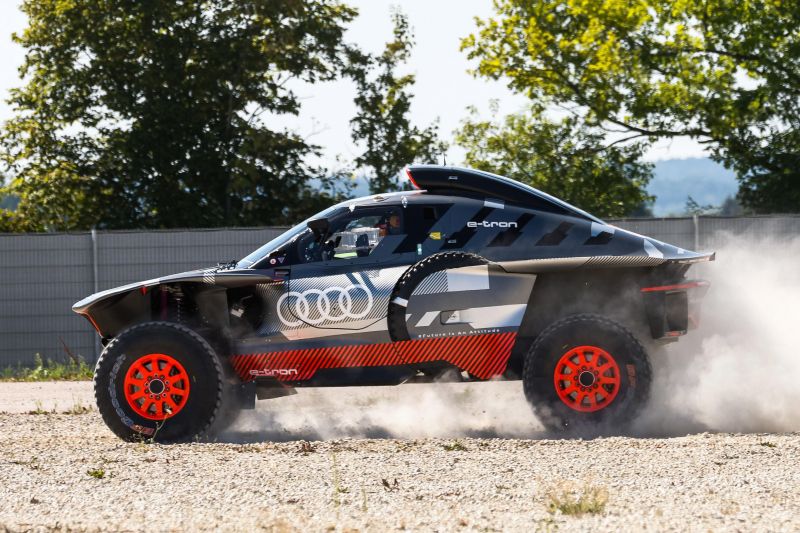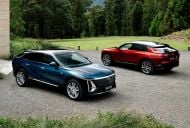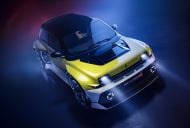Audi has revealed its “significantly improved” RS Q e-tron E2 off-road racer prototype, which wears reworked body panels for greater aerodynamic performance.
It’s an evolution of the previous Audi RS Q e-tron revealed in July 2021, which scored four stage victories at the 2022 Dakar rally in January.
The E2 naming convention used on this prototype has previously been used on the second generation of Audi’s Quattro Group B rally cars in the 1980s.
“The Audi RS Q e-tron E2 does not adopt a single body part from its predecessor,” said RS Q e-tron chief designer Axel Löffler.
A highlight of the exterior body changes include alterations to the front and rear fascias, which now taper inwards and resemble the shape of a boat’s hull.
The large wheel arches have also been revised to save weight and to optimise air flow.
In order to comply with prescribed interior dimensions, the cockpit in the Audi RS Q e-tron E2 is now wider than before.
Audi has lowered the prototype’s centre of gravity and claims to have reduced the overall aerodynamic drag by 15 per cent by doing computational fluid dynamics (CFD) that simulate testing in a wind tunnel.
“The aerodynamic aspect should not be underestimated in desert rallying either,” said Mr Löffler.
Although Audi doesn’t mention an exact weight for the RS Q e-tron E2, regulations stipulate a minimum weight of 2100kg.
The off-road racer prototype has a “simplified operation” which, as an example, allows crews to change tyres in the event of a puncture more effectively.
There are now removable body panels instead of the previous bulky covers on the flanks of the prototype.
Audi also notes the new 10-spoke Rotiform rims are “much easier to handle”.
Although there have been a number of changes to the RS Q e-tron E2’s body, its electric range-extender powertrain is retained.
The Audi RS Q e-tron E2 has electric motors nicked from the Audi Formula E car on both axles, backed by a third motor-generator unit acting as an inverter which feeds regenerated energy into the 52kWh lithium-ion battery pack.
Supporting the 52kWh battery pack is a 2.0-litre turbocharged four-cylinder petrol engine from Audi’s current DTM car.
Rather than powering the wheels directly, it runs at between 4500 and 6000rpm to feed the battery pack.
Total system output in this latest prototype is around 288kW of power, but we already know that it’s capable of 500kW.
Drive is sent through a single-speed racing transmission.
There’s also a software-based virtual centre differential, as well as physical limited-slip differentials on each axle.
Audi claims the RS Q e-tron E2 can do the 0-100km/h sprint on a loose surface in less than 4.5 seconds, and top speed is limited to 170km/h.
The Audi RS Q e-tron will make its rallying debut at the Rally du Maroc in Morocco, which will run from October 1 to 6, before competing at the 2023 Dakar Rally.





